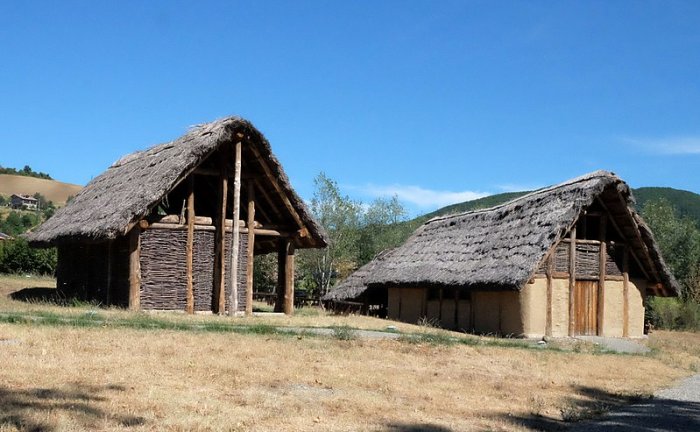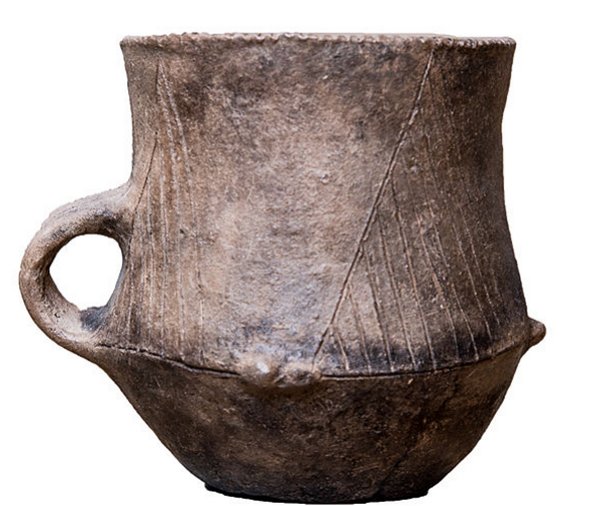Late Neolithic Italians Mastered Complex Metal Technologies – New Study
Conny Waters – AncientPages.com – A new study reveals that late Neolithic Italians mastered much more complex metal technologies than previously thought.
Scientists from Italy and the United Kingdom say that during the 4th and 3rd millennia BC, Italy was home to complex networks of metalwork exchange. However, relatively little is known about metalwork exchange across the country, especially south of the Alps.
Reconstruction of the Neolithic village of Travo, Italy. Credit: Giuale, CC BY-SA 4.0
Scientists are now attempting to understand how commonly and how widely copper was imported and exchanged throughout Late Neolithic (Copper Age) Italy.
The researchers conducted an analysis of 20 copper items, including axe-heads, halberds, and daggers, from central Italy dating to the Copper Age, between 3600 and 2200 BC.
Comparing archaeological data and chemical signatures of these items to nearby sources of copper ore, as well as to other prehistoric sites, they were able to determine that most of the examined objects were cast from copper mined in Tuscany, with the rest sourced from the western Alps and possibly the French Midi.
See also:
Copper: First Metal Used By Ancient Man More Than 10,000 Years Ago
Troublesome Ancient History Of Forks Started In Tuscany, Italy In 11th Century
‘Altar Of Twelve Gods’ At Gabii, Italy Was Once An Important Ancient Place
These results not only confirm the importance of the Tuscan region as a source of copper for Copper Age communities in Italy, reaching as far as the Tyrolean area home of the Alpine Iceman, but also reveal the unexpected finding that non-Tuscan copper was a significant import to the region at this time. These data contribute to a growing picture of multiple independent networks of Copper Age metal exchange in the Alps and neighboring regions.
According to the study conducted by Andrea Dolfini of Newcastle University (UK), and Gilberto Artioli and Ivana Angelini of the University of Padova (Italy), more research must be carried out to uncover other early sources of copper, as well as more details of the interactions between these early trade networks.
Credit: Public Domain
“The first systematic application of lead isotope analysis (a geological sourcing technique) to Copper Age metal objects from central Italy, 3600-2200 BC, has shed new light on the provenance of the copper used to cast them.
See also: More Archaeology News
The research has revealed that, while some of the copper was sourced from the rich ore deposits of Tuscany, as was expected, some is from further afield. This unforeseen discovery demonstrates that far-reaching metal exchange networks were in operation in prehistoric Europe over a thousand years before the Bronze Age," authors write in their science paper.
Written by Conny Waters - AncientPages.com Staff Writer
More From Ancient Pages
-
 Norwegian Vikings Were Much More Violent Than Their Danish Counterparts, New Study Reveals
Vikings | Aug 29, 2024
Norwegian Vikings Were Much More Violent Than Their Danish Counterparts, New Study Reveals
Vikings | Aug 29, 2024 -
 Ancient Mediterranean Mystery In The Himalayas Puzzles Archaeologists – Can DNA Or Legends Solve The Riddle?
Featured Stories | Sep 24, 2024
Ancient Mediterranean Mystery In The Himalayas Puzzles Archaeologists – Can DNA Or Legends Solve The Riddle?
Featured Stories | Sep 24, 2024 -
 Strange Mummies Of Venzone: Ancient Bodies That Never Decompose Remain An Unsolved Mystery
Featured Stories | Oct 22, 2018
Strange Mummies Of Venzone: Ancient Bodies That Never Decompose Remain An Unsolved Mystery
Featured Stories | Oct 22, 2018 -
 Why Is Caganer, The Pooping Man Part Of The Catalonian Christmas Tradition And Nativity Scene?
Christmas Traditions | Dec 18, 2024
Why Is Caganer, The Pooping Man Part Of The Catalonian Christmas Tradition And Nativity Scene?
Christmas Traditions | Dec 18, 2024 -
 Idol Of Pachacamac Inca God Reveals Its Colors
Archaeology | Jan 21, 2020
Idol Of Pachacamac Inca God Reveals Its Colors
Archaeology | Jan 21, 2020 -
 Scientists confirm the world’s only twin asteroid strike in Sweden
Human Beginnings | Oct 1, 2015
Scientists confirm the world’s only twin asteroid strike in Sweden
Human Beginnings | Oct 1, 2015 -
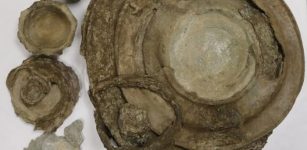 Rare 2,000-Year-Old Roman Hoard Discovered In Suffolk
Archaeology | Jul 5, 2023
Rare 2,000-Year-Old Roman Hoard Discovered In Suffolk
Archaeology | Jul 5, 2023 -
 Artifacts From Shakhi Kora Reveal The Rejection Of Early Centralized Governance In Ancient Mesopotamia
Archaeology | Dec 9, 2024
Artifacts From Shakhi Kora Reveal The Rejection Of Early Centralized Governance In Ancient Mesopotamia
Archaeology | Dec 9, 2024 -
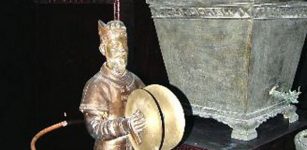 Highly Advanced Robots In Ancient China
Ancient Technology | Aug 7, 2015
Highly Advanced Robots In Ancient China
Ancient Technology | Aug 7, 2015 -
 What Was Humor Like In The 13th Century?
Featured Stories | Jun 22, 2018
What Was Humor Like In The 13th Century?
Featured Stories | Jun 22, 2018 -
 World’s First Diva Was Livia – Wife Of Emperor Augustus
Ancient History Facts | Aug 2, 2016
World’s First Diva Was Livia – Wife Of Emperor Augustus
Ancient History Facts | Aug 2, 2016 -
 Discovery Of 1500-Year-Old Celestial Observatory Dated To Sassanian Empire
Archaeology | Mar 16, 2017
Discovery Of 1500-Year-Old Celestial Observatory Dated To Sassanian Empire
Archaeology | Mar 16, 2017 -
 Hesperides – Greek Nymphs Who Guarded Fabled Garden With Divine Apples Of Immortality
Featured Stories | Jun 4, 2020
Hesperides – Greek Nymphs Who Guarded Fabled Garden With Divine Apples Of Immortality
Featured Stories | Jun 4, 2020 -
 Did Two Daughters Of Akhenaten Rule Together Under One Name Before Tutankhamun?
Archaeology | May 1, 2019
Did Two Daughters Of Akhenaten Rule Together Under One Name Before Tutankhamun?
Archaeology | May 1, 2019 -
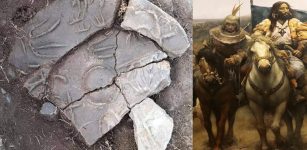 Lost Ancient Dragon City Of The Xiongnu Empire Discovered In Mongolia
Archaeology | Jul 22, 2020
Lost Ancient Dragon City Of The Xiongnu Empire Discovered In Mongolia
Archaeology | Jul 22, 2020 -
 Ancient City Of Isaura And Zengibar Castle Used By The Hittites, Persians, And Romans
Archaeology | Jun 25, 2020
Ancient City Of Isaura And Zengibar Castle Used By The Hittites, Persians, And Romans
Archaeology | Jun 25, 2020 -
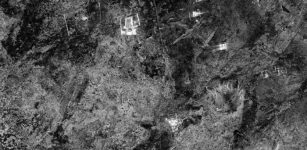 Evidence Of 3,600-Year-Old Settlement Unexpectedly Uncovered On Arabian Peninsula
Archaeology | Feb 2, 2022
Evidence Of 3,600-Year-Old Settlement Unexpectedly Uncovered On Arabian Peninsula
Archaeology | Feb 2, 2022 -
 Dragon’s Head – One Of The Most Famous Viking Symbols Discovered At Birka Ancient Excavation Site
Ancient Symbols | May 19, 2015
Dragon’s Head – One Of The Most Famous Viking Symbols Discovered At Birka Ancient Excavation Site
Ancient Symbols | May 19, 2015 -
 Stunning Swiss Stonehenge Discovered Underwater
Archaeology | Nov 4, 2019
Stunning Swiss Stonehenge Discovered Underwater
Archaeology | Nov 4, 2019 -
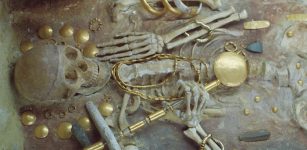 Archaeology Sheds Light On Why Some Ancient Societies Were More Unequal Than Others
Featured Stories | May 25, 2022
Archaeology Sheds Light On Why Some Ancient Societies Were More Unequal Than Others
Featured Stories | May 25, 2022

